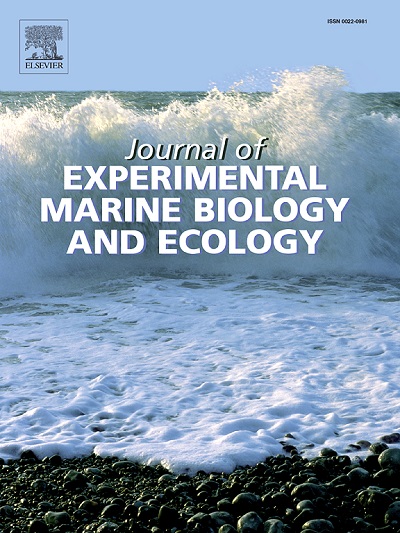Rule change: Behavioral phenotyping and adaptive strategies of black rockfish (Sebastes schlegelii) during social hierarchy reestablishment
IF 1.8
3区 生物学
Q3 ECOLOGY
Journal of Experimental Marine Biology and Ecology
Pub Date : 2025-10-03
DOI:10.1016/j.jembe.2025.152136
引用次数: 0
Abstract
This study investigates the behavioral phenotyping and adaptive strategies of black rockfish (Sebastes schlegelii) during social hierarchy reestablishment. Five groups of seven fish were observed in two phases: hierarchy formation and subsequent disruption-induced reestablishment, each phase involved a 5-day isolation period followed by a 5-day hierarchy formation period. The results revealed that: (1) During both hierarchy formation phases, high-ranking (α) individuals exhibited significantly greater distance to center-point, higher angular velocity, shorter latency to first movement, and reduced immobility time compared to low-ranking (γ) individuals. (2) After hierarchy disruption, all individuals showed increased acceleration, α individuals displayed significantly higher acceleration than both intermediate-ranking (β) and γ individuals, and β individuals surpassed γ individuals. (3) Principal component analysis (PCA) identified acceleration and activity as key behavioral determinants of hierarchy formation and reestablishment. Although rank order remained stable after α removal, newly promoted β individuals exhibited significantly increased acceleration, indicating behavioral plasticity. In summary, dominant individuals consistently displayed higher activity and broader spatial exploration, while subordinates initially exhibited prolonged immobility. During hierarchy reestablishment, subordinates adapted to the new social context through behavioral plasticity, adopting more proactive movement strategies. These findings elucidate the relationship between social status and locomotion in S. schlegelii, providing a framework for studying social dynamics in aquaculture and behavioral ecology.
规则改变:黑岩鱼在社会等级重建过程中的行为表型和适应策略
本研究探讨了黑岩鱼在社会等级重建过程中的行为表型和适应策略。五组鱼共7只,分两个阶段观察:等级形成和随后的破坏诱导重建,每个阶段包括5天的隔离期,然后是5天的等级形成期。结果表明:(1)在两个等级形成阶段,高等级(α)个体比低等级(γ)个体表现出更大的中心点距离、更高的角速度、更短的首次运动潜伏期和更短的静止时间。(2)等级破坏后,所有个体的加速度均有所增加,α个体的加速度均显著高于中级(β)和γ个体,β个体的加速度高于γ个体。(3)主成分分析(PCA)发现,加速和活动是层级形成和重建的关键行为决定因素。虽然去除α后等级顺序保持稳定,但新提升的β个体表现出显著的加速,表明行为可塑性。总之,优势个体始终表现出更高的活动和更广泛的空间探索,而下属最初表现出长时间的不动。在层级重建过程中,下属通过行为可塑性适应新的社会情境,采取更加主动的运动策略。这些发现阐明了施莱格氏梭鱼的社会地位与运动之间的关系,为研究水产养殖中的社会动态和行为生态学提供了框架。
本文章由计算机程序翻译,如有差异,请以英文原文为准。
求助全文
约1分钟内获得全文
求助全文
来源期刊
CiteScore
4.30
自引率
0.00%
发文量
98
审稿时长
14 weeks
期刊介绍:
The Journal of Experimental Marine Biology and Ecology provides a forum for experimental ecological research on marine organisms in relation to their environment. Topic areas include studies that focus on biochemistry, physiology, behavior, genetics, and ecological theory. The main emphasis of the Journal lies in hypothesis driven experimental work, both from the laboratory and the field. Natural experiments or descriptive studies that elucidate fundamental ecological processes are welcome. Submissions should have a broad ecological framework beyond the specific study organism or geographic region.
Short communications that highlight emerging issues and exciting discoveries within five printed pages will receive a rapid turnaround. Papers describing important new analytical, computational, experimental and theoretical techniques and methods are encouraged and will be highlighted as Methodological Advances. We welcome proposals for Review Papers synthesizing a specific field within marine ecology. Finally, the journal aims to publish Special Issues at regular intervals synthesizing a particular field of marine science. All printed papers undergo a peer review process before being accepted and will receive a first decision within three months.

 求助内容:
求助内容: 应助结果提醒方式:
应助结果提醒方式:


